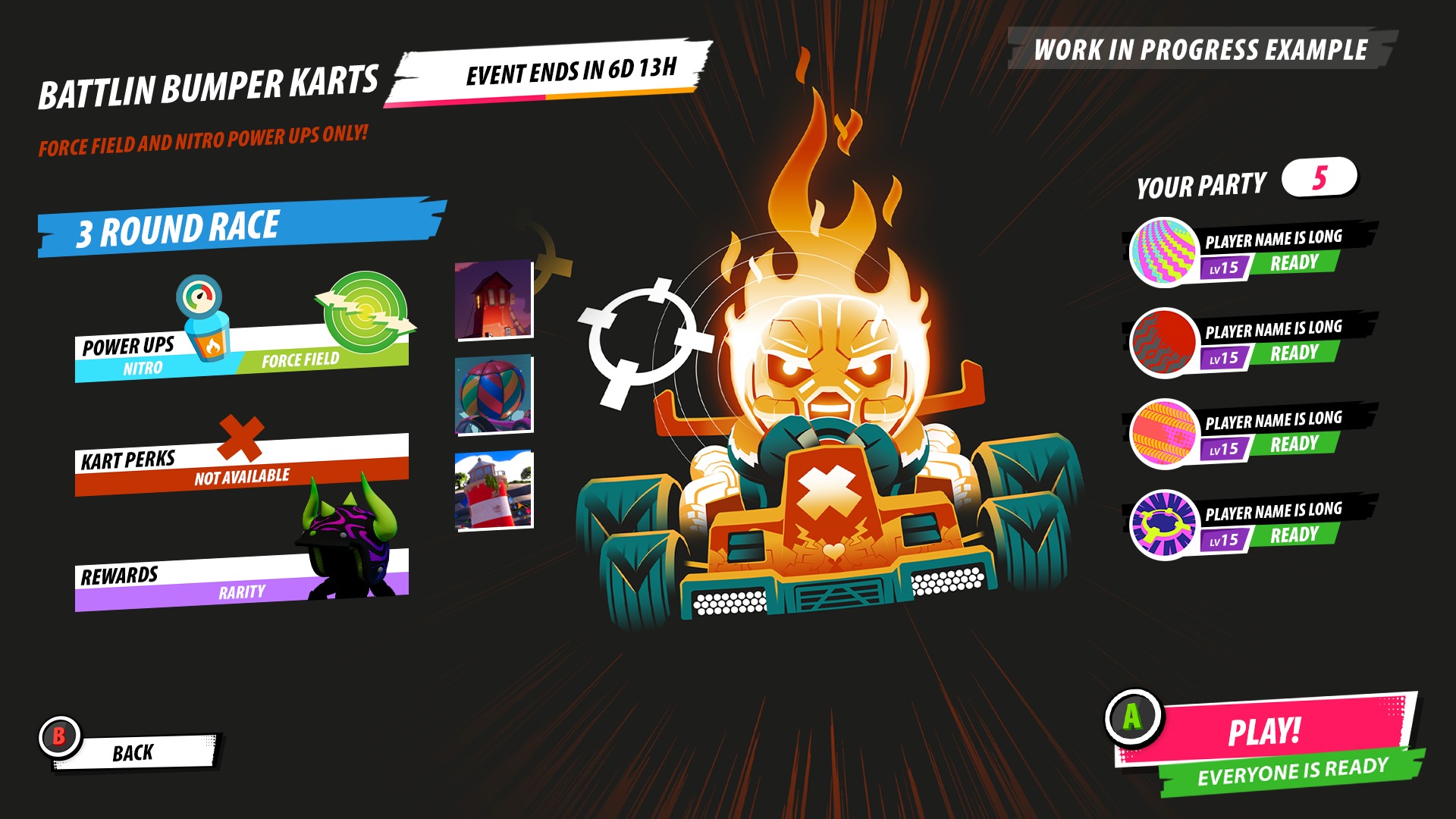With the Early Access launch of Stampede: Racing Royale expected in the first half of this year, Sumo Leamington and publisher Secret Mode Games have been prepping for the big day.
Their free-to-play racing game will pit massive groups of 60 players against each other in a battle royale on the tracks.
Sumo, which is a uniquely remote-first studio, has to ensure all its developers are headed in the same direction and that everyone is communicating well.
In this behind-the-scenes look at the studio’s process, we get a glimpse of what it takes to make a racing royale game speed along.
Keeping remote-first work flowing
As the studio tells it, first priority is making sure your people feel fulfilled. Studio director Chris Southhall has an essential role in making sure “everything is running happily” to help the team reach their goals.
“If we have developers who know what their purpose is, if they have autonomy and have a good sense of agency and freedom, then we generally, you know, see a happy team,” Southhall said.
Sumo says pursuing a balance between work achievements and prioritizing openness and trust has created a successful remote working culture, even as it breaks the traditional mold of developing games.
“The culture here, and the enthusiasm and the energy of people and, you know, the ability of people is just brilliant,” added Southhall. “Being able to, kind of, just work with colleagues and have that level of trust, and if there’s any issues, the conversation is always, ‘Okay, what do we do next? How do we fix that?’ And that kind of positivity and that willingness to move forward together is really special.”
Stampede started out with a small team working on it, before that grew to over 100 people. To scale, the studio groups developers into feature teams, with each focused on a particular aspect of the game.
Producers keep communications flowing between feature requests coming from the operations teams, and developers. “It’s usually a back and forth that says, ‘You want the moon? We can give you the stars, that kind of thing,’ ” said Arran Blomfield, a senior producer on the game.
Another producer, Aoibhinn McCauley, manages sprints which organize development goals over a set period of time. After a sprint is over, teams dissect their progress in a spring review and conduct weekly playtests to assess.
The marathon of making a live-service game
Sumo notes that with Stampede being a live service title, its team has its ear to the ground gathering feedback and iterating constantly.
“There is no sort of endpoint; you are developing, then you are putting out more content, you are doing big season drops every few months. So this isn’t a sprint, it’s a marathon,” said Paul Hollywood, Sumo development director. “What we have is so special, it’s so exciting, and it comes through from the enjoyment of the team and the passion that goes into development.”
The live service approach has been gaining in popularity over recent years. Proponents say it keeps game content fresh, while the development team is able to keep its ears to the ground and deliver on user feedback more quickly.
“It’s always out there, it’s always under people’s scrutiny, and we always have the ability to change it without great big updates or people buying new DLC to fix problems with the existing game,” Blomfield explained.

It benefits the developers as well, giving them more opportunities to fix things and react much more quickly compared to the conventional way of development.
“If there’s a bug and you could go in, you fix it, and then you feel like Superman,” said McCauley.
Stampede: Racing Royale is set to launch in Early Access on Steam in the first half of 2024. Fans can check in on the game’s development via the public Trello Board, or keep up with official dev logs to get a closer look at Sumo Leamington’s work.

